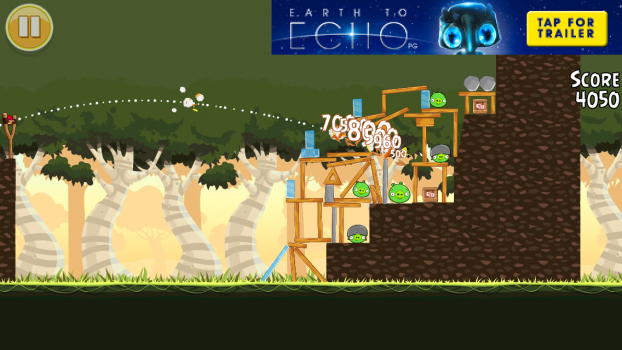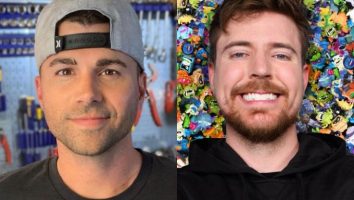Advertising directed at kids is a delicate subject on the best of days. There are plenty of parents and advocacy groups who believe such ads should be banned outright, and some companies have found certain ways to fly under the radar. Earlier this year, Common Sense Media published a report on “sneaky ways advertisers target kids,” such as celebrities who tweet endorsements or networks sites that publish a user’s activity on their Facebook accounts. PBS Kids, meanwhile, has a “Don’t buy it” site dedicated to exposing advertising tricks.
iKids Weekly talked with Dylan Collins, CEO of the London-based children’s marketing platform SuperAwesome, to get his thoughts on in-app purchases, monetizing mobile content and safe advertising for kids.
Why do we need a system that advertises to kids via mobile apps?
DC: The content creators who make mobile content for kids have to be able to survive economically. They essentially have [few] choices on mobile. It’s either in-app purchases, premium subscription, or it is advertising. Or it’s some combination. A lot of people aren’t comfortable with in-app purchasing for kids apps because sometimes they can be quite aggressive, so content developers for kids have to be fairly restrictive on how and when they use in-app purchases.
How do the challenges of mobile app ads differ from those of TV or magazine ads?
DC: From a brand perspective, when we’re working a movie client or a book publisher client, mobile is challenging because it’s so different from the media they’ve worked with before. More and more of our time is being spent helping our clients think through how a campaign is going to weave between mobile, tablet and desktop web. That’s the challenge for these folks who are building a campaign. A 10-year-old, 12-year-old, 14-year-old, how is he or she going to interact to this on tablet? How are they going to interact with it on desktop web?
SuperAwesome promises to simplify kids-safe ads with its new software development kit (SDK). What is “kids safe”?
DC: With the latest SDK version that went out, it’s doing two things. One, it’s trying to technically make life easier for developers by having a, literally, a single line of code that developers can integrate. Two, it’s trying to wrap as much of a compliance requirement as possible behind the scene [with the US Children’s Online Privacy Act (COPPA)]. The developer doesn’t have to worry about what ads are going to get shown because they are going to be safe. They are going to be compliant.
We want developers—be it game developers, educational developers or whoever—to just have to focus on their game or their app without having to worry about this aspect of monetization.
What kind of advertising will they see?
DC: We are only working with kids brands creating ad campaigns for kids products. When kids want to engage with that advertising creative, it will take them to kids-safe sites or apps, or kids-appropriate hubs or locations. We spend a lot of our time saying no to advertisers who we don’t like or don’t deem to be appropriate.

How is the ad revenue split between you and the brand or developer?
DC: We have various revenue splits with developers, essentially depending on their size and position in the market. What we’re trying to do is create a monetization situation for them.
All the brands come through our network. So as those ads go out, there are payments made directly to the actual developer, website owner or app owner based on how much activity is going through the ads on their site or app. It’s essentially identical to how Google and AdSense work.
What are your thoughts on in-app purchases, or adverts that lead to in-app purchases, especially when you’re targeting kids?
DC: The kids eco-system, in terms of content and advertising, is a balance. If you look at TV, advertising was one of things that funded the creation of great kids TV content over the years, but there always has to be a balance of what sustains content developers to be able to make more content. In-app purchasing and the free-to-play model has been, commercially, enormously successful in mobile gaming and a few other sectors. But again, there’s a balance we have to have in the kids industry. We can’t have misleading advertising. What we are definitely trying to do with our ad network and with our policy is to establish a safe-for-kids ad benchmark.
Does the mean some of your ads could lead to in-app purchasing?
DC: It depends. No one is going to remove in-app purchasing completely from apps. You can’t. Some things cost money and that’s okay. It’s a question of how clearly is that information presented. I don’t think you can come out with a blanket statement and say ‘in-app purchasing should be banned for kids.’ That doesn’t make any sense either. One of the challenges is often when parents look at apps or games, everyone is so used to content being free that when they see any form of monetization—be it in-app purchasing or ads—people immediately get horrified. But I think if you showed them the same thing in a TV context, they wouldn’t bat an eyelid simply because they’re much more used to that.
What is it like being a kids-safe advertising avenue when there are people who don’t want any advertising towards kids whatsoever?
DC: I completely respect people’s opinion who thinks that there shouldn’t be any advertising. That is one opinion and that is one approach.
I can tell anyone who raises this point, if we don’t allow the best content creators to survive, the quality of the content is going to decline—and that’s not in anybody’s interest. You’re always going to have a good, healthy debate about what the balance is, and that’s appropriate, but you got to think about sustainability. From my perspective, that’s really what the conversation needs to come to. It’s got to be appropriate, engaging and fun, but most of all it’s got to be sustainable.
This interview has been condensed and edited.





















